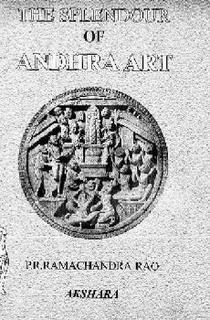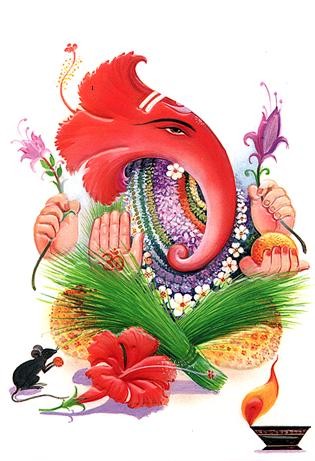Book Review: Cultural Heritage of Andhra region
M. L. Nigam

THE SPLENDOUR OF ANDHRA ART: >P. R. Ramachandra Rao; Pub. by Akshara, 16-11-1/3, Malakpet, Hyderabad-500036. Rs. 1000.
A good number of erudite scholars in India and abroad have already produced voluminous works on Andhra art — visual and performing arts. This book is yet another addition which provides further insight into the subject catering to the needs of general readers.
Art and architecture
The author includes all the rock cut caves of western India within the purview of Andhra art and architecture as he considers Andhras and Satavahanas as one and the same people. It is however debatable as the majority of scholars do not agree; according to inscriptional evidence the Satavahanas came to Andhra from outside.
The author has taken enough pains to provide exhaustive lists of Buddhist, Hindu and Jain monuments and sites that bespeak of the great Andhra contribution towards the development of architecture, sculpture and paintings. However, he could have discussed some of the architectural, stylistic and artistic elements of each school or period by maintaining a better chronological order so as to make the text more informative and systematic. No doubt, beautiful illustrations accompanying the text are helpful to understand the contents. The wall paintings in the temples of Lepakshi and Tanjavur are also mentioned.
Literature
The book further provides very rich and useful information on the development of Telugu literature in the region. Nannayya Bhatta is the first known Telugu writer, who belonged to the 11th Century A.D. His translation of the Mahabharata, though incomplete, is a masterpiece of Telugu literature. After the fall of the Vijayanagar Empire, a number of feudatory courts at Gandikota, Siddhavatam, Nellore, Gingee and Madura provided liberal patronage to Telugu poets and scholars. The Uttara Ramayanamu of Kanakanti Papa Raju is an example. His other works, Yakshagana and Vishnu-Mayavailasamu, are well-known. He lived in Nellore during 1750-1800. At Tanjavur, the ruler, Raghunatha Nayak took keen interest in the development of Telugu language and literature. He himself wrote a number of Telugu poetic works and more famous among them is the Valmiki Charitramu, which is the first celebrated work in Telugu prose.
His other Telugu compositions are Ramayanamu, an incomplete poetic work and Nalacharitra in Devipada metre. Being a lover of music, he wrote Sangita Sudha in Sanskrit and many other works. His son, Vijaya Raghava also composed a number of Telugu works. Yet another celebrated poet is Chemakura Venkata Kavi who composed a number of famous Telugu poetic works on mythological subjects.
Performing arts
In the field of music, great exponents like Muthuswami Dikshitar, Shyama Sastri and Tyagaraja made tremendous contribution by composing in many ragas and ragamalikas, which became very popular in every household of the Andhras. Muthuswami Dikshitar was also an adept in Hindustani music. The contribution of the Andhras in the realms of dance and drama also is mentioned in this book.
The author has done full justice to these subjects by citing the important names and their fabulous contributions in their respective fields. For example, Vedam Venkataraya Sastri, Divakarala Tirupati Sastri and Chellapilla Venkata Sastri are some of the great playwrights whose famous works are staged even today in every corner of Andhra Pradesh. The popularity of dance in royal courts, temples and in open village platforms can be understood from the variety of poses in stone sculptures found in every temple of Andhra.



1 Comments:
off-white
supreme outlet
supreme outlet
golden goose outlet
golden goose
kyrie shoes
bape
jordan 6
goyard online store
jordan 1 low
Post a Comment
<< Home